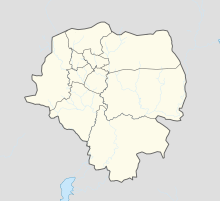Our website is made possible by displaying online advertisements to our visitors.
Please consider supporting us by disabling your ad blocker.
Urban evolution of Addis Ababa
Urbanization of Addis Ababa began in late 19th century in a site of Finfinne inhabited by various Oromo clans, and Emperor Menelik II formed permanent settlement for his army and nobles. In 1881, he transferred his capital to Entoto, a vicinity area of Addis Ababa, ultimately relocated in Addis Ababa in 1886; he along with his wife Empress Taytu Betul founded it after finding Entoto undesirable due to coldy climate location, and abundance of hot mineral springs believed to have health effects in Addis Ababa. In 1890s, Addis Ababa saw rapid population growth due to factors related to 1889–1892 famine and immigration to the area and mobilisation of traditional militias and other associated immigrants after the Battle of Adwa (1896).


The 1909 land act further transformed Addis Ababa into metropolitan area, therefore, shifted from safar to infrastructure settlement in 1910s and 1920s, and schools roads, hospitals and other infrastructure began developing. During the Italian occupation of the country (1936–1941), new master plan was developed by seven European architects in order beautify Addis Ababa as their colonial city by featuring monumental structure and public square for regime grandeur, with steady population growth. After their occupation, the British consultant, first by Sir Patrick Abercrombie in 1946 and French consultant team led by architect Luis De Marien developed monumental structures, infrastructures, and satellite towns to beautify Addis Ababa as "capital of Africa". The Derg regime saw nationalization of extra house that prevent private investment, leading urban morphology to decline from 5% to 3.4%. The Hungarian planner C.K. Polonyi embarked the first master plan in this era based on structuring the suburbs and the inner-city. Along with the 1986 Italo-Ethiopian master plan, the plan ultimately met failure to implement due to lack of funds for infrastructural provision by the government. The revised 2003 master plan was intended to support the new government led by the Ethiopian People's Revolutionary Democratic Front (EPRDF) and its policies on market economy.
Previous Page Next Page


